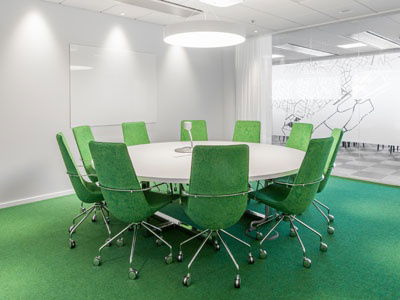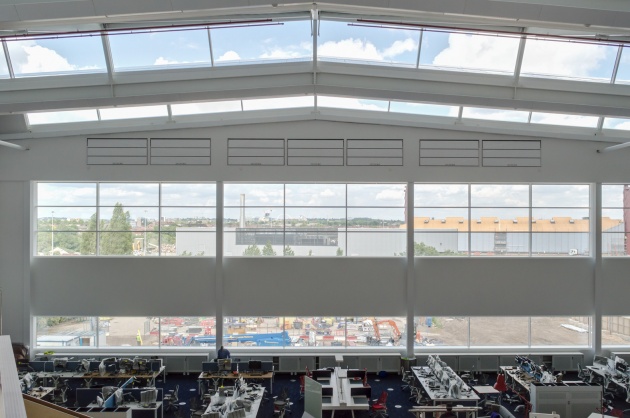7 places in your office building where you can use lighting controls better

1. Meeting rooms
How often do the meeting rooms at your office get used? Half the time? Less? And how scrupulous are staff about turning the lights off? This is a key area for lighting controls. You can use occupancy sensors and, if necessary, daylight sensors to make sure there’s only light when we need it. If you want to give your staff a bit more control over the light levels, you can let them override the daylight dimming and switch the lights on – then set them to turn off automatically after the room’s been empty for a few minutes.

2. Toilets
This is another obvious case for controls. Especially because, if a light gets left on in a toilet, no-one’s going to see it from outside to turn it off. A simple PIR sensor will ensure that the lights are only on when there’s someone actually there. But make sure you allow a generous time before turning the lights off, so you don’t plunge people into darkness mid-bowel movement.

3. Corridors
Here, daylight and occupancy sensors can be used. One thing to bear in mind when using controls in areas like this is that people don’t tend to like having to step into a darkened area and wait for the lights to come on. So think carefully about where you position your sensors so the lights come on ahead of the person. You’ll make your building’s occupants safer and more comfortable.

4. By the windows
By zoning your luminaires into groups you can dim just the ones that are near the windows, and leave the people at the other end of the office with full artificial light. Multiple sensors will tell you exactly how much light is in a particular spot, or you can use fewer sensors and alter the dimming patterns of the luminaires according to how far they are from the window.

5. The boardroom
If you’ve got a room you use for meetings, presentations or events, you’ll probably want a choice of ‘scenes’ to make sure the lighting suits what’s going on. If people are scrutinising the accounts, put light on the table. If they’re watching a presentation, dim the lights cinema-style to focus them on the projection. If they’re watching a speaker, dim the lights and light the speaker. If you’re hosting an evening event, perhaps some kind of atmospheric scene with dimmer, warmer lighting would be nice. But don’t overcomplicate things – too many options only increases the risk that the person using the system will pick one that’s not appropriate. Think too about how you describe them in the names of the scenes - or if it might be better to use images or diagrams.

6. Clusters of desks
Take a look at your office and think about which areas people just sit in and work, and which areas are for circulation. Now you can zone your lights so these areas are treated differently. For instance, if you want to leave lights on for the benefit of security at night, or for the last person leaving the building, light the circulation areas and leave the desk clusters off.

7. By the door
A ‘last man out’ switch is one way to make sure your lights don’t get left on needlessly when there’s nobody there. Night night.

Register for your free copy of Lux Review magzine at www.luxreview.com